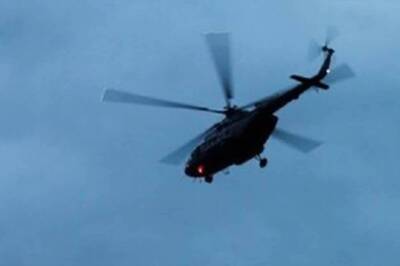
views
Ethiopian Airlines' doomed 737 MAX jet hit excessive speed and was forced downwards by a wrongly-triggered automation system as pilots wrestled to regain control, a preliminary report into the crash that has shaken the aviation world showed on Thursday. Three times the captain, Yared Getachew, cried "pull up", before the Boeing Co plane plunged into a field six minutes after takeoff from Addis Ababa, killing all 157 passengers and crew, said the report by Ethiopian investigators.
The March 10 disaster, and parallels with another 737 MAX crash in Indonesia last October in which 189 people died, has led to the worldwide grounding of Boeing's flagship model.
It has also brought uncomfortable scrutiny over new software, pilot training and regulatory rigour.
The report leaves unanswered questions, aviation experts said, over whether crew followed guidance not to restore power to a troublesome anti-stall system following sensor damage, possibly caused by a bird strike. The plane was also left at unusually high thrust throughout the flight, data suggested.
While the Ethiopian Civil Aviation Authority's Accident Prevention and Investigation Bureau had a remit to investigate rather than blame, it implicitly pointed the finger at Boeing by defending the pilots, recommending the U.S. company fix its control systems, and saying regulators must be certain before allowing the MAX back in the air.
"The crew performed all the procedures repeatedly provided by the manufacturer but was not able to control the aircraft," Transport Minister Dagmawit Moges told a news conference.
"Since repetitive uncommanded aircraft nose down conditions are noticed ... it is recommended that the aircraft control system shall be reviewed by the manufacturer."
Boeing, the world's biggest planemaker and one of the United States' most important exporters with a $500 billion order book for the MAX, says a new software fix for its MCAS anti-stall system will enable pilots to always override if necessary.
Responding to the preliminary report, Boeing Chief Executive Officer Dennis Muilenburg said: "As pilots have told us, erroneous activation of the MCAS function can add to what is already a high workload environment."
"It's our responsibility to eliminate this risk. We own it and we know how to do it," Muilenburg said in a statement.
FRAGMENTS IN A CRATER
According to the preliminary report, an alarm indicating excess speed was heard on the cockpit voice reporter as the jet reached 500 knots (575 miles per hour) - well above operational limits.
The plane had faulty "angle of attack" sensor readings, its nose was pushed down automatically, and the crew lost control despite following recommended instructions, it said.
"Most of the wreckage was found buried in the ground," the report said, indicating the strength of the impact on an arid field in an agricultural zone. No bodies were recovered, only charred fragments among the debris in a crater.
A final report by Ethiopian authorities aided by air-safety experts from the United States and Europe is due to be published within a year.
Boeing has seen billions wiped off its market value since the crash, but its shares rose 2.9 percent on Thursday. Morgan Stanley said the report of flight control problems, whichBoeing was already trying to fix, meant a "worst case scenario" of a new cause was probably off the table.
The software update "along with the associated training and additional educational materials that pilots want in the wake of these accidents, will eliminate the possibility of unintended MCAS activation and prevent an MCAS-related accident from ever happening again," Muilenburg's statement said.
Families of the victims, regulators and travellers around the world have been waiting to find out to what extent Boeing technology or the pilots' actions played a role.
The preliminary report into the crash of a Lion Air 737 MAX in Indonesia suggested pilots also lost control after grappling with the MCAS software, a new automated anti-stall feature that repeatedly lowered the nose based on faulty sensor data.
"Whatever the issues were, they better be 110 percent sure about their resolution, otherwise the 157 lives lost would have been for nothing if something like this happens again," said one woman, who lost her father in the Ethiopian crash, asking not to be identified. "This is a lesson to not take shortcuts in order to try and save bucks."
'PROFITS OVER SAFETY'?
The U.S. Federal Aviation Administration regulator, under fire for its certification of the MAX, cautioned the inquiry was not over. "As we learn more about the accident and findings become available, we will take appropriate action," it said.
Boeing may press to know more about how crew members responded to problems triggered by the faulty data. The New York Times quoted the Ethiopian government's Dagmawit as saying pilots turned MCAS off and on, which is not the step recommended in procedures telling crew to leave it off once disabled.
With bereaved families angry and confused, relatives of an American woman killed in the Ethiopian crash, Samya Stumo, filed the first lawsuit on behalf of a U.S. victim in Chicago. The complaint named Boeing and Rosemount Aerospace Inc, the manufacturer of the angle of attack sensor, as defendants.
Stumo is the niece of consumer activist Ralph Nader, who called for a boycott of the 737 MAX on Thursday.
Pilots around the world were watching closely.
"If the preliminary report from the Ethiopian authorities is accurate, the pilots quickly identified the malfunction and applied the manufacturer's checklist," said Captain Jason Goldberg, spokesman for Allied Pilots Association, which represents American Airlines pilots.
"Following this checklist did not appear to allow the pilots to regain control of the aircraft."
But a former U.S. National Transportation Safety Board investigator questioned the aircraft's speed, which according to data in the report was left on a higher than usual setting. Aviation experts say the sensor fault should have required the crew to take manual control of the power since it would disrupt accurate speed readings in the cockpit.
"The report does not address information about unreliable airspeed procedures which should be considered," said Greg Feith, a former NTSB air safety investigator.




















Comments
0 comment